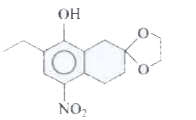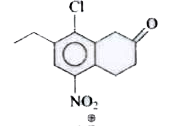Predict the major products when reagents react with 2- phenyloxirane
To predict the major products when 2-phenyloxirane reacts with sodium phenoxide and HBr, we will analyze each reaction step by step.
Step 1: Understand the structure of 2-phenyloxirane
2-phenyloxirane is an epoxide (cyclic ether) with a phenyl group attached to one of the carbons in the three-membered ring. The structure can be represented as follows:
OCCPhH
Where Ph represents the phenyl group.
Step 2: Reaction with sodium phenoxide
(a) Sodium phenoxide (NaOPh) acts as a nucleophile. The oxygen in sodium phenoxide has a negative charge and will attack the less hindered carbon atom of the epoxide ring.
1. The nucleophile (OPh-) attacks the less hindered carbon (the one with the hydrogen).
2. This leads to the opening of the epoxide ring.
The reaction can be depicted as follows:
OCCPhH∣OPh(νc≤oϕ≤aacks)
3. After the nucleophilic attack, we get a product where the epoxide ring is opened, resulting in:
Ph|CH|CH2OPh
Step 3: Hydrolysis of the product
Upon hydrolysis, the product will be:
- 2-phenyl-1-ethanol (with the hydroxyl group on the second carbon).
Major Product from Sodium Phenoxide:
2-Phenyl-1-ethanol
Step 4: Reaction with HBr
(b) HBr will protonate the oxygen in the epoxide, making it a better leaving group.
1. The oxygen atom in the epoxide ring will be protonated by HBr, leading to a positively charged oxygen:
O+CCPhH
2. The more substituted carbon (the one bonded to the phenyl group) will be more stable for carbocation formation. Thus, the ring will open at this carbon.
3. The bromide ion (Br-) will then attack the carbocation formed at the more substituted carbon.
The final product will be:
Ph|CH|CH2Br
Major Product from HBr:
3-Bromo-1-phenyl-1-propanol
Summary of Major Products:
- From sodium phenoxide: 2-Phenyl-1-ethanol
- From HBr: 3-Bromo-1-phenyl-1-propanol
2-phenyloxirane is an epoxide (cyclic ether) with a phenyl group attached to one of the carbons in the three-membered ring. The structure can be represented as follows:
Where Ph represents the phenyl group.
(a) Sodium phenoxide (NaOPh) acts as a nucleophile. The oxygen in sodium phenoxide has a negative charge and will attack the less hindered carbon atom of the epoxide ring.
2. This leads to the opening of the epoxide ring.
OCCPhH∣OPh(νc≤oϕ≤aacks)
Ph|CH|CH2OPh
Upon hydrolysis, the product will be:
- 2-phenyl-1-ethanol (with the hydroxyl group on the second carbon).
2-Phenyl-1-ethanol
(b) HBr will protonate the oxygen in the epoxide, making it a better leaving group.
O+CCPhH
Ph|CH|CH2Br
3-Bromo-1-phenyl-1-propanol
- From sodium phenoxide: 2-Phenyl-1-ethanol
- From HBr: 3-Bromo-1-phenyl-1-propanol
Similar Questions
Knowledge Check
- Question 1 - Select One
Predict the major product of the reaction.
 A
A B
B C
C D
D
- Question 2 - Select One
Predict the major product of reaction:
 A
A B
B C
C D
D
- Question 3 - Select One
Predict the major product of given reaction :
 A
A B
B C
C D
D
Predict the major product of given reaction :
 View Solution
View SolutionPredict the major product ofthe given reaction.
 View Solution
View SolutionPredict the product when given compound reacts with LiAlH4.
 View Solution
View SolutionPredict the major product of following reaction :
 View Solution
View SolutionPredict the major product of following reaction :
 View Solution
View Solution



